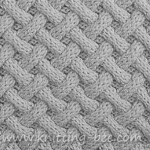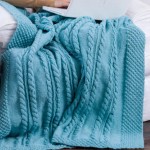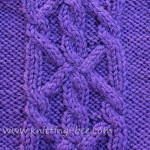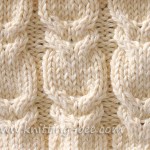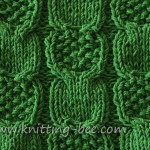Lattice Cable Free Knitting Stitch. The Lattice Cable stitch is a knitting pattern that creates a fabric with an interwoven, lattice-like appearance, suitable for a variety of projects. This effect is achieved using cable stitches, specifically the Left Twist (LT) and Right Twist (RT), which involve crossing a small group of stitches over another. These twists are strategically arranged to create the diagonal lines characteristic of a lattice. The wrong-side (WS) rows are simply purled, providing a plain background that allows the cable pattern to visually pop. For a classic look in town and country wear, consider using a Shetland 4-ply, a medium-weight wool, or even a novelty yarn mix. If you’re aiming for luxury, angora or a textured “poodle” yarn would provide a soft and elegant touch.
The versatility of the Lattice Cable stitch makes it a great choice for diverse applications. It can be incorporated as a decorative element, such as a smock or sweater yoke, an inset panel, or a sleeve band, adding a touch of sophistication. Alternatively, it can be used as an all-over design for a classic-style sweater, lending a timeless textured appeal, or for a baby’s crib cover, providing both warmth and visual interest. The stitch’s inherent structure makes it adaptable to both smaller design details and larger expanses of fabric.

Abbreviations:
- K: Knit
- P: Purl
- WS: Wrong Side (the “back” side of the knitting)
- rep: Repeat
- st(s): Stitch(es)
- LT: Left Twist.
- skip one stitch and knit the second stitch on the Left Needle.
- Then purl the skipped stitch, and
- finally, slip both the stitch off the Left needle
- RT: Right Twist
- Skip one stitch, and purl the second stitch on the left needle.
- Knit the skipped stitch.
- slip both stitches from the left needle.
- end last repeat: the direction to do on the final repeat of a row.
Cast On:
Multiple of 8 sts plus 2.
Pattern Directions:
Row I (WS) and all other WS rows: Purl.
Row 2: KI, *LT, k4, RT; rep from, end k1.
Row 4: K2, *LT, k2, RT, k2; rep from *.
Row 6: K3, *LT, RT, k4; rep from, end last repeat k3.
Row 8: K4, *RT, k6; rep from *, end last repeat k4.
Row 10: K3, *RT, LT, k4; rep from *, end last repeat k3.
Row 12: K2, *RT, k2, LT, k2; rep from *.
Row 14: K1, *RT, k4, LT; rep from *, end k1.
Row 16: K8, *LT, k6; rep from *, end k2.
Repeat row I to 16.

